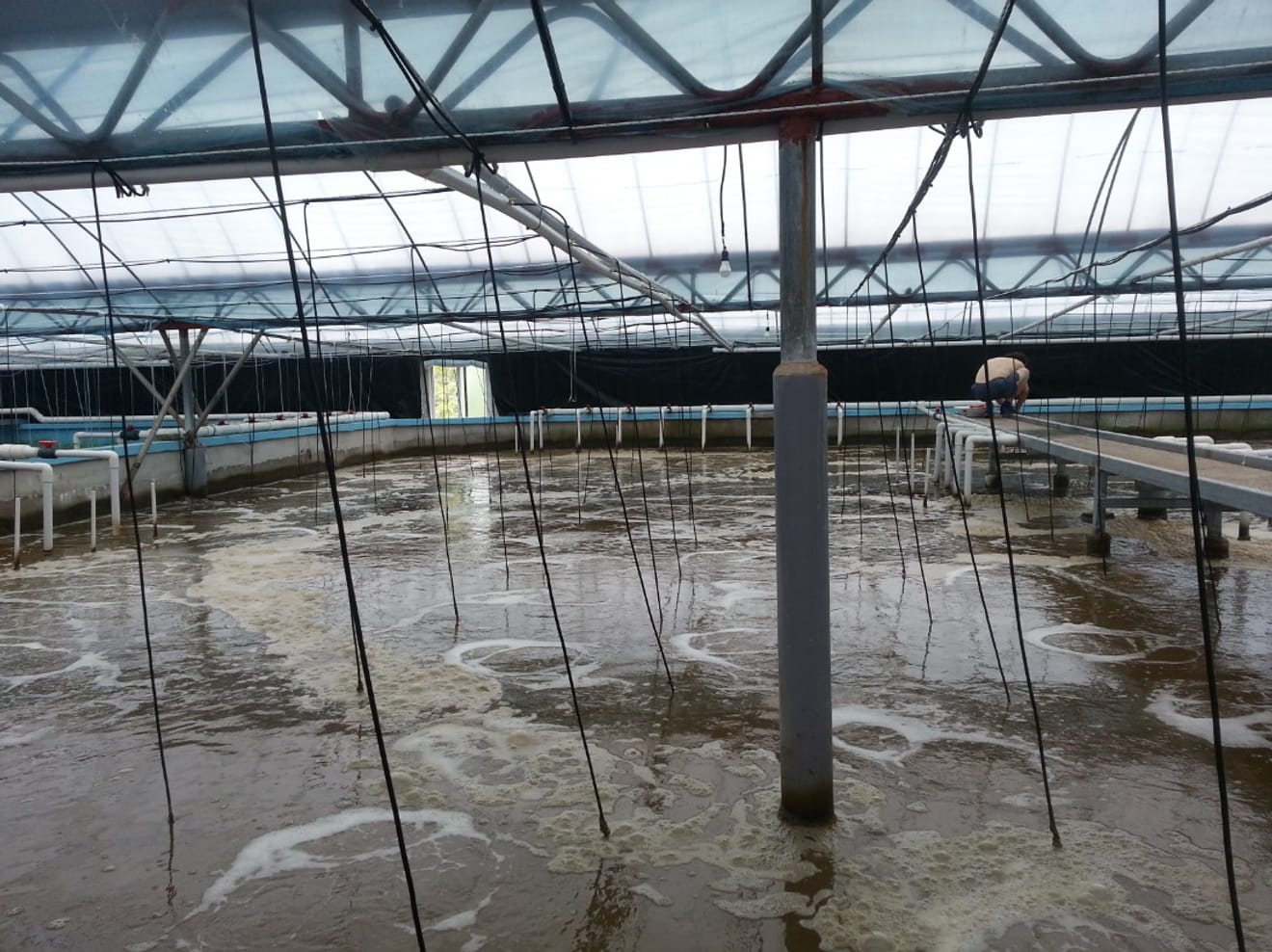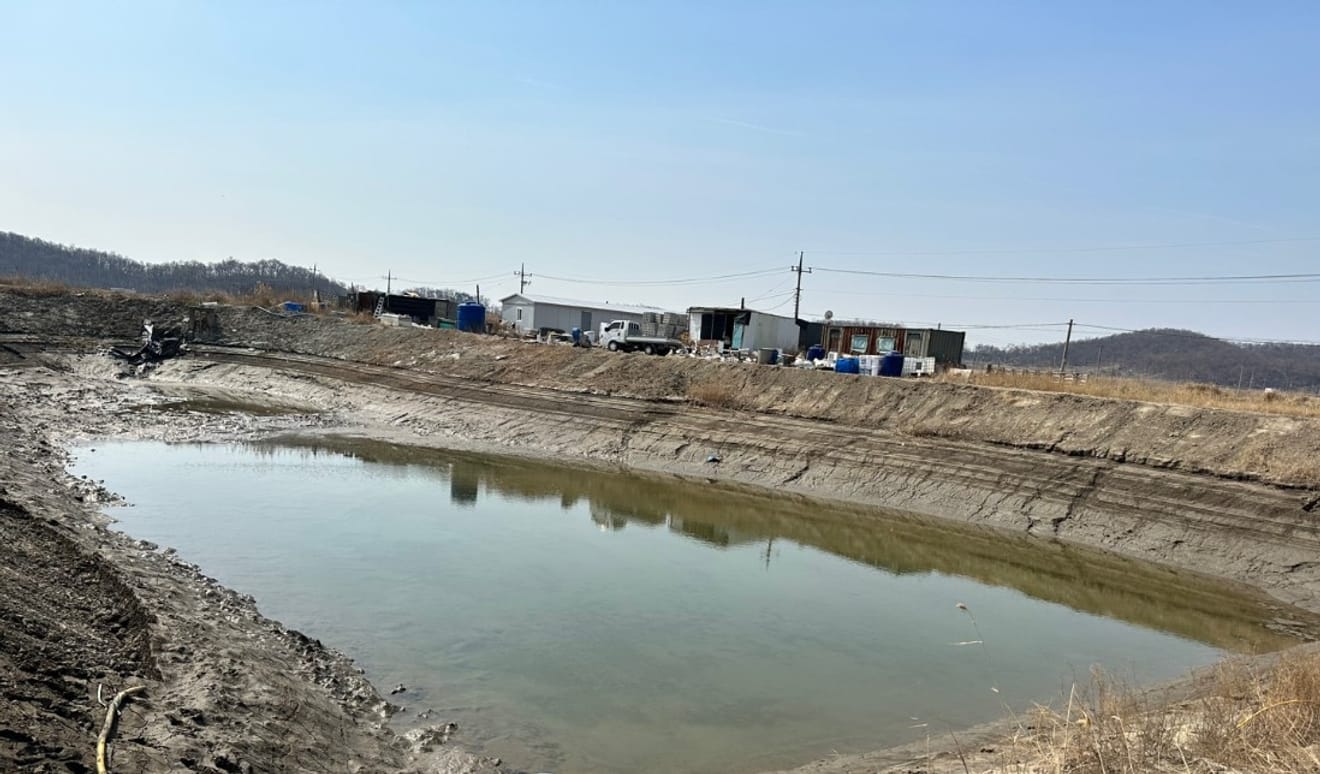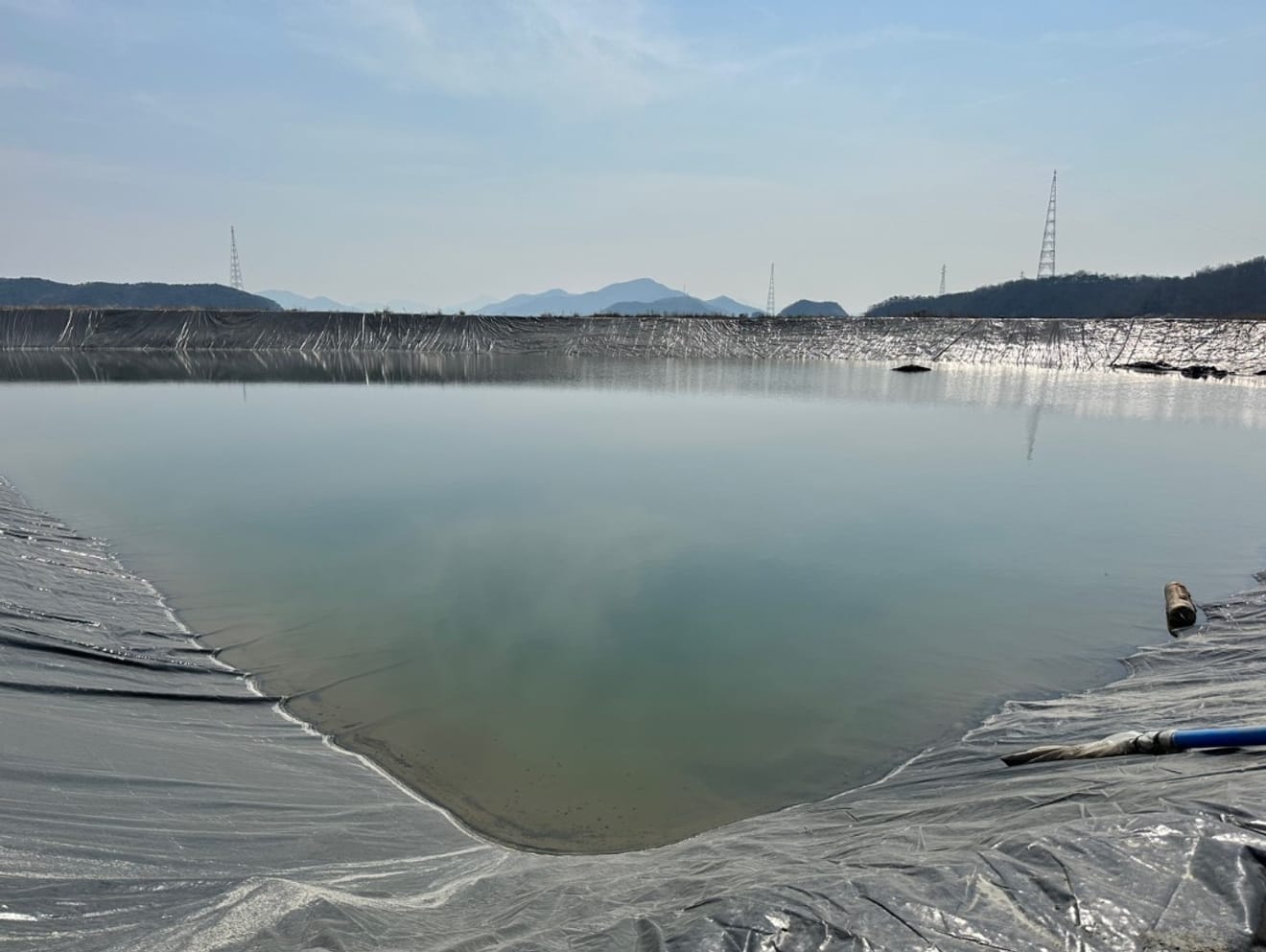Subject
- #Farming Technology
- #Biofloc
- #Backup Reservoir
- #Shrimp Farming
- #Water Pollution
Created: 2024-02-06
Created: 2024-02-06 21:21

Biofloc systems are the mainstream method for shrimp farming. It's a farming method that utilizes microbial communities to purify water and then uses those communities as feed for shrimp, thereby reducing water usage and increasing feed efficiency in aquaculture. With the Biofloc system, shrimp farming can be conducted from start to finish without significant water discharge. However, various variables can arise during shrimp farming. Water quality can rapidly change due to factors like weather fluctuations, sudden changes in external environments such as the rainy season, and increased feed amounts.
When the water quality in the farm deteriorates rapidly, the most practical solution is 'water exchange'—simply replacing the water. Replacing contaminated water with fresh water is the most ideal approach. In urgent situations requiring a water exchange, the only option may be to directly pump in seawater, but this carries a significant risk of viral exposure.
To mitigate this risk, securing a reserve reservoir is crucial. By establishing a reserve reservoir and storing seawater there for disinfection in advance, you can use it when needed, avoiding viral risks. Depending on the farm's surroundings, you can also use seawater that has been allowed to settle without disinfection.

Primary Backup Reservoir
Our farm also decided to renovate a previously neglected reservoir to utilize as a reserve reservoir. We initially planned to divide the large reservoir in half, using one half for shrimp farming by covering the embankment with an HDPE film and the other half as a reserve reservoir, and commenced construction. However, due to the anticipated decrease in shrimp sales this year owing to poor economic conditions, we've decided to use the entire area as a reserve reservoir this year.
We've designated the area with the 300mm intake pipe as the primary reserve reservoir and the embankment-covered area as the secondary reserve reservoir. The plan is to draw seawater into the primary reservoir and allow it to settle, then transfer this water to the secondary reservoir for disinfection. The disinfected water will then be used in the mid-growth house and the open-field farm. Once the open-field farm is fully filled, the water drawn into the secondary reserve reservoir will be used as supplementary water throughout the farming period.

Secondary Backup Reservoir
Many farmers have suffered losses due to the misconception (perhaps a false hope?) that Biofloc systems eliminate the need for water exchange. The primary consideration in shrimp farming should be identifying the best way to maintain a suitable water environment for the shrimp. Maintaining a clean water environment is the best way to ensure a healthy environment for shrimp, not stubbornly adhering to the Biofloc method and refusing to exchange water. Therefore, to be prepared for emergencies, it's essential to construct a reserve reservoir.
Naturally, every shrimp farmer desires to cultivate a larger area and raise more shrimp to generate higher profits. However, if the water quality deteriorates and leads to the complete loss of shrimp due to disease just before harvest, all efforts will be in vain. It's crucial to prioritize creating a healthy environment for the shrimp, abandoning greed, and producing high-quality shrimp, as this ultimately yields greater profits.
Source: https://saeunara.tistory.com/150 [saeunara:tistory]
Comments0